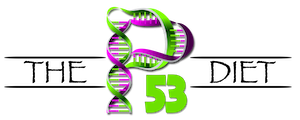- Your cart is empty
- Continue Shopping

There are 200 different types of cells in the human body, each cell has a different function or forms a kind of tissue. Listed below some of the types of cells.
- Bone Cells – Bones are comprised of a mix of collagen and calcium phosphate minerals. The bones cells com in three primary types. The osteoclasts are the large cells that breakdown and decompose the bone tissues. They aide in bone resorption that helps regulate the level of blood calcium. Osteoblasts which function in groups of connected cells to help regulate bone mineralization and produces a substance called osteoid which help form the bones. The osteoblasts mature to form osteocytes. Osteocytes help to form the bone and help regulate the of calcium.
- Cartilage Cells – In the early development of life when we were a fetus our initial skeleton was mainly composed of cartilage which is then gradually replaced by bone. Cartilage cells also serve as a cushion between many joints in the bone. Cartilage cells are composed of different minerals and collagen fibers. Cartilage is needed to be flexible.
- Endothelial Cells – Are the cells that line the lymphatic system walls as well as the lymphatic system walls. The inner walls of the blood vessel walls are composed of endothelial cells, as well as lung, heart, and skin. They also help move fluid, gases between the blood and tissues in the surrounding area.
- Epithelial Cells – Our outer layer known as skin, is composed of a layer of epithelial cells called the epidermis. Under the epidermis is a layer of connective tissue called the dermis. Under the dermis is another layer called the hypodermis.
- Fat Cells – Fat cells are also called adipocytes. The adipocytes contain drops of triglycerides otherwise known as (stored fat). The stored fat can then be used as energy at a later time. After the cells used the stored fat as energy the fat cells then shrink in size. The fat cells also produce hormones needed to regulate blood pressure, blood clotting and cell signaling, and sex hormone metabolism.
- Muscle Cells – Muscle cells make our bodies move. The cardiac muscle cells form involuntary cardiac muscle in the heart. The skeletal muscle tissue is needed for voluntary muscle movement. Skeletal muscle tissue is attached to the bone. The skeletal muscle cells are covered with connective tissue. Smooth muscle tissue lines the body cavities that forms the walls of organs in the body including blood vessels, lung airways, kidneys, intestines, etc. The smooth muscle tissue is an involuntary muscle.
- Nerve Cells – Are also known as neurons. Neurons are cells that are electric. This is how cells communicate with other cells via connections called synapses. Sensory neurons communicate via light, touch, and sound that affect the sensory organs and sends signals to the brain or the spinal cord. The motor neurons receive electrical signals from the brain and the spinal cord to control the muscle contractions
- Neuroglial Cells – Also called glia or glial cells. They are non-neuronal cells from the central nervous system and the peripheral nervous system.
- Pancreatic Cells – Function as an endocrine, and exocrine organ. They produce and secrete the digestive enzymes to the small intestine.
- Platelets – Platelets have no nucleus and help to stop bleeding by clumping together at the point of the injury.
- Red Blood Cells – The red blood cells deliver the oxygen to other body tissues
- Sex Cells – Sex cells are also called gametes. Sex cells are the sperm in the male and eggs in the female. The sex cells only have half the number of chromosomes, that is because when the sperm (male) fertilizes the egg (female), the number of the chromosomes in the offspring must be the same total number as the parents.
- Stem Cells – Stem cells are referred to as the main cells because other cells such as nerve, liver, cardiac, and blood arise from the stem cells. No other cell in the body has the means to generate a new cell type. Embryonic stem cells come from the embryo between three to five days old. Adult stem cells are found in the bone marrow and fat. New research show that the stem cells can also create new muscle, bone, and heart cells.
- White Blood Cells – The white blood cells are the body’s fighting army. The white blood cells are divided into five main types: eosinophils, neutrophils, basophils, lymphocytes and monocytes. The B cells, T cells, and the NK cells a type of lymphocyte. They all help in protecting the body from invading pathogens.


